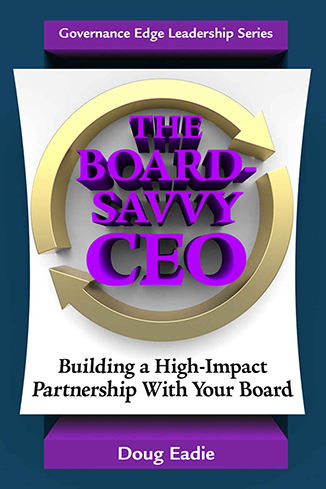You’ll recall that the last article posted at this blog discusses core values – serving as a prelude to the podcast that Lynne Thomas Gordon and Michelle Mason, Incoming Chair and CEO, respectively, of the Association Forum, will be recording for www.extraordinaryceo.com. Not long after posting the values article – at a workshop on innovation I was presenting for nonprofit CEOs – I was asked to explain the relationship between values and vision. The discussion was so lively that I’m pretty sure the following thoughts on “that vision thing” will interest our readers.
In a nutshell, a vision statement paints a picture of the long-term future that your nonprofit aspires to create, or at least to play a significant role in creating. The vision can relate to your nonprofit itself, in terms of its size, breadth of activities, share of the market, reputation, and the like. The vision can also relate to your nonprofit’s desired long-term impacts on the world around it. For example, the long-term envisioned impacts and outcomes making up the updated vision statement of a chamber of commerce I recently worked with include:
“An expanded and diversified economic base”
“A higher quality, better trained workforce”
“Productive, motivated workers”
“A healthy business environment”
“Expanded community collaboration and cooperation in addressing civic development needs in such areas as education, public safety, the arts, housing, and health”
The foregoing vision statement was first brainstormed by the chamber’s board and executive team in a two-day retreat and then refined and augmented by the board’s planning committee before being adopted by a formal board resolution.
In my experience, vision is the preeminent driver of thoughtful, systematic innovation and change. As you well know, the identification of strategic issues (“change challenges” in the form of opportunities, problems, threats) takes place in the gap between your nonprofit’s current strategies-in-place (programs, services, facilities, budgets) and its vision for the future. The strategic question is: What opportunities might move my nonprofit significantly closer to realizing particular elements of its vision, and what barriers might significantly block movement toward one element or another of our vision? Without the context of a detailed (rather than pithy paragraph version) vision statement, it would be much more difficult to identify the most important opportunities and barriers. The chamber’s envisioning, for example, a “higher quality, better trained workforce” turns its board and executive team members’ attention to opportunities and barriers related to workforce development. If the chamber’s leaders had not specifically incorporated workforce development into its vision for the future, a large new state grant for worker education and training would probably not have appeared on this chamber’s radar screen, and an opportunity would most likely have been lost.






